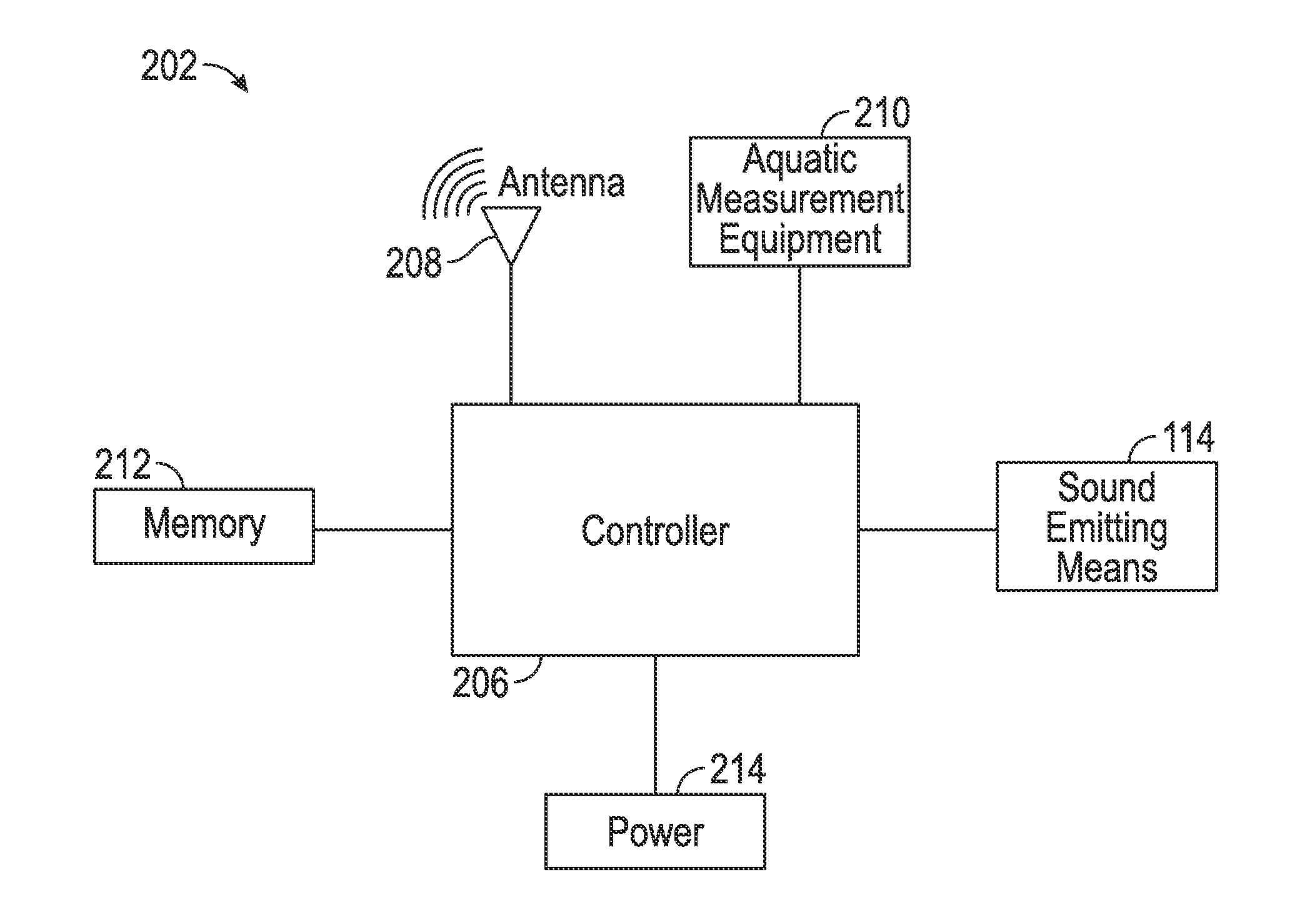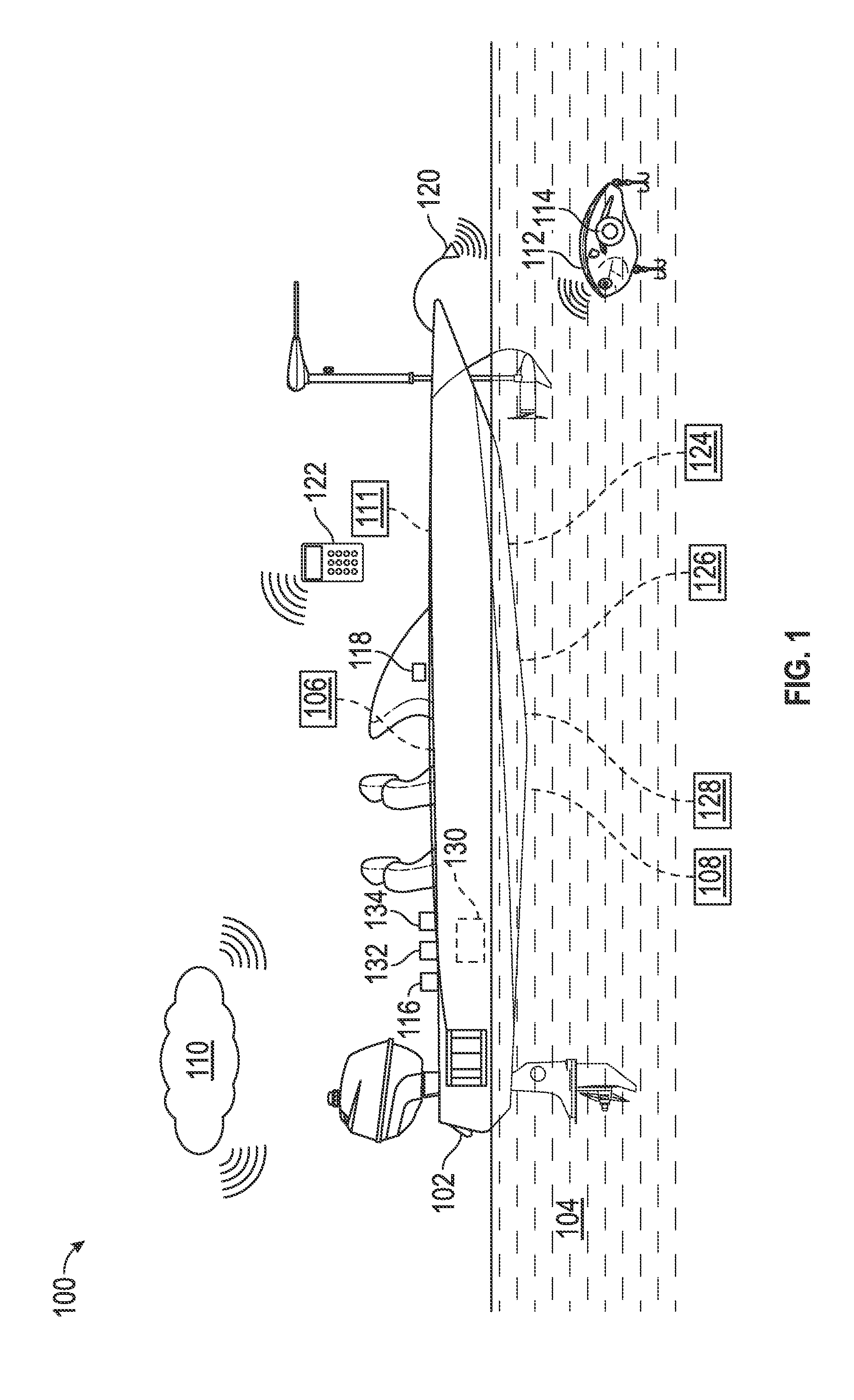Systems and methods for automated fish culling
a technology of automatic culling and fish, applied in the direction of program control, position fixation, electric/electromagnetic audible signalling, etc., can solve the problems of affecting the success or failure of a fisherman, current technology is not configurable to have an effective appearance, and current technology is not capable of being programmed to mimic specific live bait species
- Summary
- Abstract
- Description
- Claims
- Application Information
AI Technical Summary
Benefits of technology
Problems solved by technology
Method used
Image
Examples
Embodiment Construction
[0032]The present disclosure generally relates to systems and methods for automated fish culling.
[0033]As used herein, a “processor” may be comprised of, for example and without limitation, one or more processors (each processor having one or more cores), microprocessors, field programmable gate arrays (FPGA's), application specific integrated circuits (ASICs) or other types of processing units that may interpret and execute instructions as known to those skilled in the art.
[0034]As used herein, “memory” may be any type of storage or memory known to those skilled in the art capable of storing data and / or executable instructions. Memory may include volatile memory (e.g., RAM), non-volatile memory (e.g., hard-drives), or a combination thereof. Examples of such include, without limitation, all variations of non-transitory computer-readable hard disk drives, inclusive of solid-state drives. Further examples of such may include RAM external to a computer or controller or internal thereto...
PUM
 Login to View More
Login to View More Abstract
Description
Claims
Application Information
 Login to View More
Login to View More - R&D
- Intellectual Property
- Life Sciences
- Materials
- Tech Scout
- Unparalleled Data Quality
- Higher Quality Content
- 60% Fewer Hallucinations
Browse by: Latest US Patents, China's latest patents, Technical Efficacy Thesaurus, Application Domain, Technology Topic, Popular Technical Reports.
© 2025 PatSnap. All rights reserved.Legal|Privacy policy|Modern Slavery Act Transparency Statement|Sitemap|About US| Contact US: help@patsnap.com



